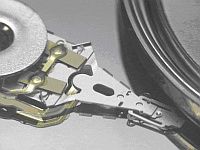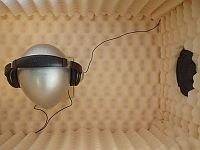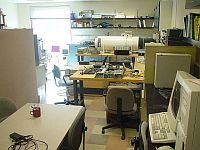Research
The research interests of Raymond de Callafon include topics in the
field of experiment-based
approximation modeling, control relevant system identification and
recursive/adaptive control. In particular, he is interested in
designing and analyzing
experiment-based modeling techniques for control relevant
identification and model-based adaptive control and extending these
techniques to specific classes of non-linear and linear parameter
varying (LPV)
systems. Applications of his research vary from complex
engineering systems such as electromechanical (mechatronic) systems,
structural engineering, aerospace and industrial processes in which
signal
processing, data based modeling, fault detection and
feedback/feedforward control plays an important role.
The research is directed by Raymond de Callafon within the System Identification and Control Laboratory (SICL) at the Dept. of Mechanical and Aerospace Engineering at UCSD. A listing of current resarch projects is listed below. For more details on the research group of Raymond de Callafon please follow this page down to the description of the SICL.
Projects
Motion Control for Data Storage Systems

|
| Close-up image of a piezo-electric dual-stage servo actuator in a Hard Disk Drive |
Adaptive Noise and Vibration Control

|
| An active noise control headset being tested in a noise controlled environment |
Mechatronics and Coordinated Robotics

|
| Development of a single wheel unibot robot that requires 2D stabilization |
System Identification and Control Laboratory

|
| Walk-in view of the SICL, located at room 303, EBU2, Dept. of MAE, UCSD |
- an anechoic chamber for modeling and active control of sound,
- an active silencer for testing of adaptive sound cancellation techniques,
- a shaker table for vadaptve vibration control techniques,
- a 3-axis CNC machine for prototype manufacturing,
- computer hardware and software for embedded mircoprocessor (PIC and TI DSP) programming, and
- at least 5 computers with dedicated real-time hardware for real-time prototyping of control systems.
Several Ph.D, M.Sc. and (international) exchange students are affiliated with the SICL and (being) supervised by Raymond de Callafon. For more details on the research group of Raymond de Callafon or the experimental facilities of the SICL, please visit the webpage of the System Identification and Control Laboratory.
CMRR Servo Laboratory
Raymond de Callafon also manages the CMRR Servo Laboratory located at room 201, Center for Magnetic Recording Research (CMRR) at UCSD. The CMRR Servo Laboratory provides the experimental facilities to conduct research and experiments in advanced motion planning, servo control and experimental modeling of high precision servo systems in data storage applications. Current demands on Extremely High Density Recording (EHDR) with data storage capacities approaching 10 TerraBit per square inch for hard disk drives and 8 TerraByte/cartridge for tape storage systems have unleashed the need to develop dedicated servo control systems. The CMRR Servo Laboratory works closely with the Tribology and Mechanics Laboratory of Prof. Talke at the CMRR and houses:
- multiple Hard Disk Drive (HDD) experiments with special purposes embedded DSP boards developed by Headway for in-situ modeling, and control design
- an air-bearing spinstand for testing HDD dual-stage actuator
modeling and control,
- multiple LTO tape drives and special purpose DSP hardware for in-drive measurements for actuator modeling and adaptive disturbance cancellation,
- single and two-axis LDV systems for high precision velocity and displacement measurements.
For more information on the research and experimental facilities, please visit the webpage of the Center for Magnetic Recording Research.